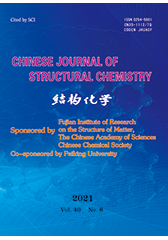Conjugation of Disassembled Zincphthalocyanine-based Nanocomposites and the Synergistic Effect on Visible-light Photosensitive Activity
ZHAO Wen-Bo, ZHANG Ya-Lan, XU Guang-Yu, JIA Xiao* and XUE Jin-Ping*
Chin. J. Struct. Chem. 2021, 40, 1012-1022 DOI: 10.14102/j.cnki.0254-5861.2011-3104
August 15, 2021
metal-organic frameworks, zinc phthalocyanine, photosensitive activity, synergistic effect
ABSTRACT
In this research, a conjugated Pc-MIL-88B (Fe)
nanoplatform was constructed via a condensation process between modified zinc
phthalocyanine and MIL-88B (Fe) for the removal of organic pollutants. The
as-prepared material was fully characterized by TEM, XPS, ICP, FTIR, UV-Vis, N2 adsorption-desorption isotherm, etc. The results indicate that Pc-MIL-88B (Fe)
preserved the topological structure of MIL-88B (Fe), and the micropores of framework
could effectively prevent the aggregation of Pc in water. Meanwhile, the conjugated
Pc-MIL-88B (Fe) basically maintains the singlet oxygen quantum yield of Pc, and
behaves a much higher photocurrent intensity compared to NH2-MIL-88B
(Fe). Additionally, the photosensitive activity and reusability of Pc-MIL-88B
(Fe) were evaluated by the degradation of methylene blue in aqueous solution
under visible light irradiation, and the degradation mechanism was also
investigated in detail.








